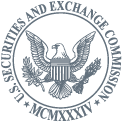The Securities and Exchange Commission (SEC) has voted to change the regulatory framework for ETFs in the US by implementing a new rule and form amendments.
The adaptations are the regulator’s bid to create a clearer and consistent framework for most of the ETFs available on the market.
Originally the vote on the proposed ETF rule by the regulator was meant to take place on Wednesday but was postponed for reasons not made public.
Across the pond, Europe has been developing its own regulatory changes as a result of Brexit such as the ETF migration to the ICSD model structure and benchmark regulation.
The biggest rule change affecting ETF issuers is the removal of exemptive relief by the SEC. This means, ETFs which are sturctured as open-ended funds will not need approval by the SEC before listing on an exchange. This process can take up to six months to complete depending on the complexity of the product and can be an expensive task for issuers.
Additionally, investors will be protected by the new rule and will benefit from recordkeeping requirements and the mandatory daily portfolio transparency which issuers must publish on their websites. An issuer will have to include specific data points on its product pages under the new rule such as historical information, bid-ask spreads and premium and discount figures.
The rule does not apply to leveraged or inverse ETFs, products structured as a share class of a multi-class fund and non-transparent ETFs.
In tandem with the implementation of the new rule, the SEC is rescinding certain ETF reliefs such as ETFs which operate in reliance to the rule and ETFs which operate in a master-feeder structure which has become outdated and is rarely used, according to the regulator.
SEC once again delays bitcoin ETF decision
Once the rule has been published on the Commission’s website and in the Federal register, the rule, form amendments and exemptive reliefs will become effective after 60 days.
Jay Clayton, SEC chairman, said in a statement: “Since ETFs were first developed over 27 years ago, they have provided investors with a number of benefits, including access to a wide array of investment strategies, in many cases at a low cost.”
“As the ETF industry continues to grow in size and importance, particularly to main street investors, it is important to have a consistent, transparent, and efficient regulatory framework that eliminates regulatory hurdles while maintaining appropriate investor protections.”
Jeremy Smith, Ropes & Gray asset management partner, added: "The final rule does not contain any new requirements relative to what was proposed in June 2018, and certain core provisions, such as custom basket requirements, uniform treatment of index and actively managed ETFs, and rescission of existing exemptive relief held by those eligible to rely on the rule, are unchanged from what was proposed.
"While the final rule doesn’t reflect all of the changes on the industry’s wish list, the Commission crafted revisions to address most of the operational or other concerns that the industry had with the proposed rule."



